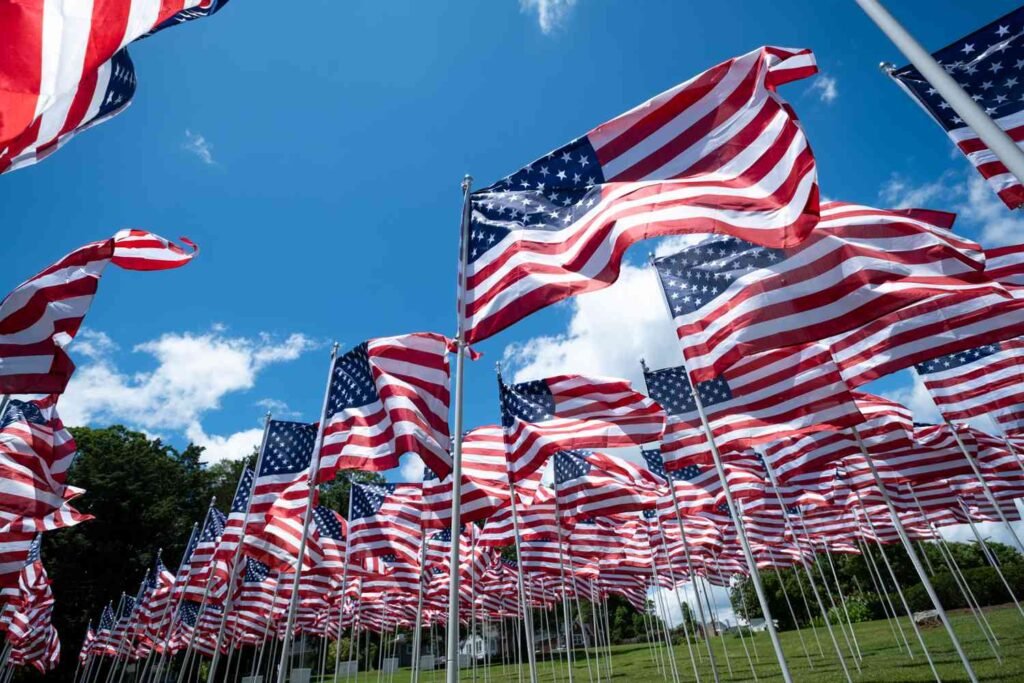:max_bytes(150000):strip_icc():format(jpeg)/GettyImages-2040268541-f41ca2c82de34f83a7f655e977ad9d89.jpg)
When you see a “Made in America” label, you may believe what you’re buying was crafted entirely in the United States. Many people assume that the label, often “Made in the USA,” means they’re helping domestic businesses throughout the supply chain. However, the truth is a bit trickier than that.
The Federal Trade Commission (FTC) states that for a product to qualify for using a “Made in America” label, “all or virtually all” of it needs to be made in the U.S. But that doesn’t necessarily mean every component is domestically sourced.
Here are five insights that illuminate what’s behind the label.
Key Takeaways
- The FTC requires that products labeled “Made in America” must be “all or virtually all” made in the U.S., meaning that only small parts can come from abroad.
- Some companies use labels like “Designed in America” or “Assembled in America” to avoid violating the rules, while still tapping in to consumer patriotism.
- The U.S. military is required to prioritize American-made goods, except in cases where the quality, quantity, or price do not meet the military’s needs.
- Tariffs increase the cost of imports, leading some consumers and manufacturers to favor domestic suppliers.
1. “Made in America” Doesn’t Mean 100% American
To qualify for the “Made in America” (aka “Made in U.S.A.”) label, the FTC says that “all or virtually all” of a product must be made in the U.S. But that means some parts, like screws, buttons, or other components, could technically be made in another country.
So while a product may be labelled “Made in America,” parts of it could originate in another country, hiding the extent of the global supply chain.
2. It’s Not the Same As Assembled in the U.S.
How a product is assembled can determine how it’s labeled. When an Egyptian fabric is sewn into a hat in Tennessee, or a Japanese motor is installed into a lawn mower in Kentucky, those products do not qualify for the “Made in America” label.
When key components come from other countries, the product must get an adjusted label, such as “Assembled in America” or “Made in America with foreign parts,” which may not carry the same weight for some consumers.
3. It’s More About Marketing Than Manufacturing
Many brands seek to use the “Made in America” designation because it instills ideas of quality, ethics, and patriotism in consumers. This is particularly evident in the shifting consumer values, distrust in overseas labor practices, and supply chain issues witnessed during the COVID-19 pandemic.
So some companies utilize varying terms as a workaround, such as those noted above, and others like “Designed in America” to evoke the same feeling without meeting the FTC’s strict criteria for the “Made in America” label.
Important
The FTC imposes civil penalties on businesses that use an “unqualified Made in U.S.A. label” on their products.
4. U.S. Military: Made in America
The Buy American Act and the Berry Amendment stipulate that the U.S. military must prioritize buying American-made goods. However, there are many exceptions and waivers for products that are not available in sufficient quality or quantity, or if it is not sold at a justifiable cost.
5. Tariffs Matter
Tariffs play a role in pricing, so they don’t directly impact the “Made in America” label. However, they can alter how a business creates its product.
Many U.S. companies import materials or parts from abroad, and tariffs on those imports make them more costly. These costs are often passed to the consumer, making the final product more expensive.
These higher prices may even hit products labeled “Made in America” if some of the inputs are imported. Local producers may also raise their prices as imports become less competitive.
On the other hand, when tariffs raise product prices and demand falls, businesses might decide to produce their goods entirely in the U.S. As a result, products that weren’t previously labeled “Made in America” might eventually carry that label.
One Example of Made in America: Walmart
Walmart, an American chain and one of the largest retailers in the world, has pledged to provide its customers with more “Made in the USA” goods.
In 2013, the company announced a $250 billion investment toward offering products that are “made, grown, or assembled” in the U.S. In 2021, Walmart announced an additional $350 billion to be invested over the next 10 years, an initiative that is expected to support 750,000 jobs.
While the move supports domestic suppliers, this choice isn’t all altruistic. As Americans become more conscious about where their products come from, supporting domestic goods allows companies like Walmart to profit from patriotic consumption.
The Bottom Line
Seeing a “Made in America” label may invite feelings of patriotism and pride, suggesting a fully domestic product. While the FTC requires all products bearing such a label to be “all or virtually all” made in the USA, some foreign materials may make their way into a final product.
To avoid this strict requirement, many companies find that the loophole of using phrases such as “Assembled in America” conveys the same message; yet it’s not the same, and this slight distinction may be important to socially conscious consumers.

